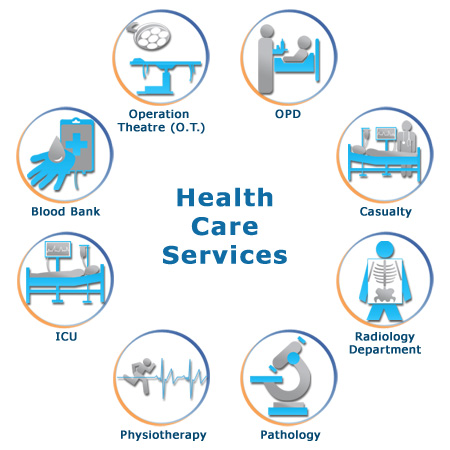
Among patients with serious illnesses, there have been cultural disparities in advance care planning. The reason for this is because clinicians fail to consider the wishes of the patient and their family. They don't provide culturally appropriate care and fail to understand the patient’s perspective about pain.
In addition to disparities in advance care planning, patients with serious illness have also experienced cultural disparities in end of life procedures. A study with palliative patients with cancer in Southern Thailand revealed five EoL preferences. These included relief from distressing feelings, disclosure to loved ones, passing away at home, being mentally alert until the death, and being able to communicate illness to them. EoL care was also valued by participants as being complete, ready for death, and not a burden on family members or society. These preferences are consistent with the beliefs of Asian societies, where people choose to die at home more often than Western societies.

Participants made it a priority to get the full truth about their illness. This includes the information required to make informed decisions and avoid unnecessary pain. A good relationship with family members enhances patient self-satisfaction and makes it easier for the patient to accept death. This also increases the patient's senses of interconnectedness. In addition, a good relationship with a healthcare provider makes the avoidance of death less likely.
Participants also believe that EoL care matters because they would like to be remembered for their lives after they pass away. They want a peaceful and painless end, but also the truth about their illness. Participants also rated EoL procedures important as being able die at home, in one’s own bed, and at one's own pace.
In addition to the five EoL preferences, the participants also rated EoL treatment important as being complete, not burdening families, and being mentally alert until the time they die. EoL treatment was also important to them because they valued having a good working relationship with medical staff, not suffering from psychological and physical discomfort, as well as having good relationships with family and friends.
Another study conducted on Thai elderly patients in Northeastern and Central regions identified three EoL care preferences. These are shortness of breath relief, being aware of the death process, and the ability to die at home. These EoL care preferences were also associated with the participants' age, occupation, religion, and economic status. These preferences were also associated to the participants' past experience with death.

It is important to understand the importance of EoL care because these preferences are critical to reducing ethnic disparities in advance care planning. The study found that participants were satisfied with their end of life care. However, they were less likely to be able express their views on resuscitation, dying in hospitals, and other issues. This may have been due to a lack knowledge regarding EoL procedures.
FAQ
What are the three types?
Patients have limited control over the treatment they receive in this system. They will go to hospital B if they have an emergency, but they won't bother if there is nothing else.
This second system is fee-for service. Doctors make money based on how many drugs, tests and operations they perform. If they aren't paid enough, they won’t do extra work for you, and you’ll pay twice as.
The third system is called a capitation. It pays doctors based upon how much they actually spend on healthcare, rather than the number of procedures they perform. This encourages doctors not to perform surgery but to opt for less costly treatments like talking therapies.
What happens if Medicare disappears?
Americans who are not insured will see an increase. Employers may decide to drop employees from their plans. In addition, many seniors will face higher out-of-pocket costs for prescription drugs and other medical services.
What does it mean to "health promote"?
Health promotion refers to helping people stay healthy and live longer. It emphasizes preventing sickness and not treating existing conditions.
It includes activities like:
-
Right eating
-
Get enough sleep
-
exercising regularly
-
staying active and fit
-
Smoking is not permitted
-
managing stress
-
Keeping up with vaccinations
-
avoiding alcohol abuse
-
Regular screenings, checkups, and exams
-
Learn how to deal with chronic illnesses.
How can I ensure that my family has access health care of the highest quality?
Most likely, your state has a department or health that ensures everyone has affordable healthcare. Some states also offer coverage for families with low income children. You can contact your state's Department of Health for more information about these programs.
What are my options for immunizations in the United States?
Immunization is the process by which a vaccine stimulates an immune response. The body responds to the vaccine by making antibodies (immunoglobulins) that protect against infection.
What are medical systems and what do they mean?
Medical systems have been designed to improve the quality of life and make it easier for patients to live longer and better lives. They make sure patients receive top-quality care when they're in need.
They ensure that the appropriate treatment is given at a timely manner. And they provide the information needed for doctors to give the best possible advice on what treatment would suit each patient.
What are the levels of health care facilities in each category?
First, there are general practice clinics that provide basic medical care for patients who don't need hospital admission. If required, they can refer patients for treatment to other providers. These include general practitioners, nurse practitioners, or midwives.
The second level includes primary care centers that offer outpatient comprehensive care including emergency treatment. These include hospitals and walk-in clinics as well as urgent care centers.
The third level of care is secondary care centres, which offer specialty services such as eye surgery, orthopaedic surgery, and neurosurgery.
Statistics
- Healthcare Occupations PRINTER-FRIENDLY Employment in healthcare occupations is projected to grow 16 percent from 2020 to 2030, much faster than the average for all occupations, adding about 2.6 million new jobs. (bls.gov)
- Over the first twenty-five years of this transformation, government contributions to healthcare expenditures have dropped from 36% to 15%, with the burden of managing this decrease falling largely on patients. (en.wikipedia.org)
- The health share of the Gross domestic product (GDP) is expected to continue its upward trend, reaching 19.9 percent of GDP by 2025. (en.wikipedia.org)
- For the most part, that's true—over 80 percent of patients are over the age of 65. (rasmussen.edu)
- Consuming over 10 percent of [3] (en.wikipedia.org)
External Links
How To
What are the key segments of the healthcare industry?
The healthcare industry is made up of key segments such as medical devices, pharmaceuticals and diagnostics, biotechnology, therapy, health information technology, medical equipment, and other medical devices.
Blood pressure monitors, defibrillators and stethoscopes are all medical devices. These products are typically used to diagnose, prevent, and treat diseases.
Pharmaceuticals are medications that are used to treat or alleviate symptoms. Antibiotics, antihistamines (or contraceptives), are just a few examples.
Diagnostics are tests performed by laboratories to detect illness or injury. These include blood tests, urine samples and CT scans.
Biotechnology is the use of living organisms, such as bacteria, to create useful substances that can then be applied to humans. Some examples include insulin, vaccines, and enzymes.
Therapeutics are treatments administered to humans to treat disease or relieve symptoms. These therapies can include drugs or radiation therapy.
Health information technology includes computer software programs that help physicians, and their teams manage data related to patient records. It helps doctors and their teams track which medications are being used, when they should have been taken, and if they work properly.
Medical equipment is anything used to diagnose, treat, or monitor conditions or illnesses. Dialysis machines, pacemakers and ventilators are just a few examples.